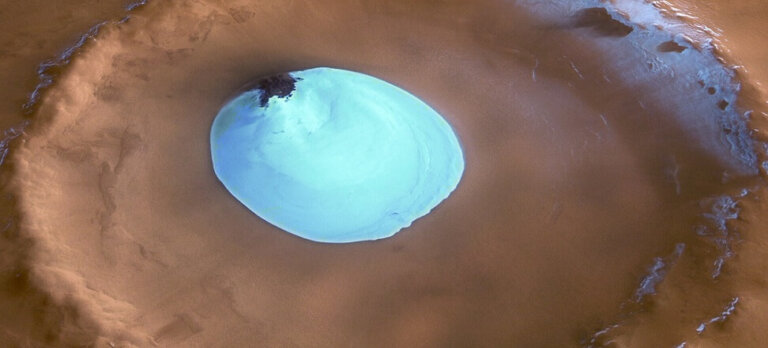There was water on Mars!
More than 3 billion years ago, the Red Planet had an ocean, lakes and rivers.
During periods known as the Noachian (4.1-3.7 billion years ago) and the Hesperian (3.7-2.9 billion years ago), Mars may have been suitable for life similar to our own.
Later, however, it lost most of its atmosphere, and with it the ability to hold liquid water on the surface.
While much of it must have escaped into space, scientists assume that large deposits may still be waiting stored beneath the globe’s surface.
Mars’ former surface water could have been incorporated into minerals, buried as ice or, what would be best for us, stored somewhere deep as liquid in aquifers.
By studying the propagation velocity of seismic waves within a 50-km radius around the InSight lander on Elysium Planitia, a group of scientists from the Scripps Institution of Oceanography, the University of California, San Diego, and the Department of Earth and Planetary Sciences at the University of California, Berkeley, developed a model of the water saturation of rocks at depths of ∼11.5-20 km using rock physics algorithms and Bayesian inference with Markov chain Monte Carlo sampling.
The researchers concluded that from the collected data, the central crust of Mars, composed of fractured magma rocks, is saturated with liquid water.
This has implications not so much for future manned missions to Mars (the liquid deposits are too deep for that), but for future attempts to find life on the Red Planet.
